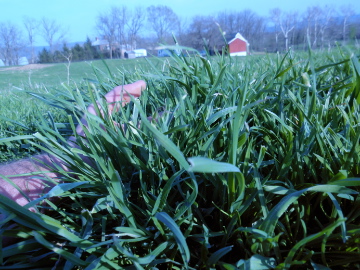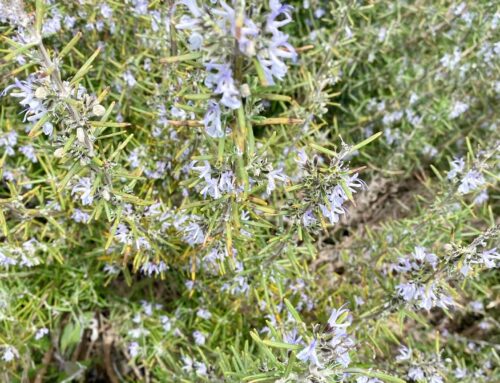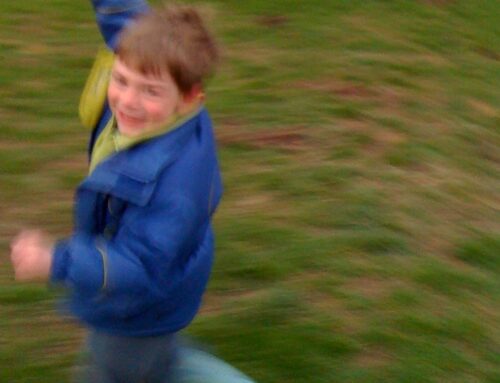Each fall, as our chickens are out foraging for late season grasshoppers and finishing off the last of the frost-nipped clover, wild geese are flying overhead in their classic V formations, honking their way to warmer, southern climates. Busy with their own activities, I’ve never noticed any of our hens looking up wistfully at the skies, never sensed any longing on their part to join this annual southern migration. Taking a cue from their jungle fowl ancestors, our chickens seem content to move in their own local orbit, satisfied with their vistas, at peace with the knowledge of a sturdy roost, and a warmly stuffed egg box.
Of course, I can’t really tell what’s going on inside the mind of a chicken. Even if I could, I doubt there’s a movie script out there titled The Chicken Whisperer waiting for me to reveal my talents. Hollywood, as usual, will have to remain on my backburner.
In the meantime, a more important aspect of my farming duties is to harmonize the relationship between domesticated livestock and nature. Those geese flying overhead are my annual reminder that the seasonal clock never stops ticking. By paying attention to these natural cues, we can discover the many subtle agricultural benefits of what is occurring right above our heads.
When wild birds set off in search of milder climates, they are looking for several basic things: food, comfort, and among other things, a safe place to build up their energy for the upcoming mating season. That their return trip overlaps with the greening of the Northern Hemisphere is certainly no coincidence; migratory birds are like the Hippies of the animal kingdom, following the sun, going where the climate suits their clothes. It’s a pattern structured on practical necessities, since food and shelter are difficult to locate in a snowdrift. Instead, they return north just in time to find the world becoming verdant again, a land that is stretching and yawning and throwing off its winter clothes. Invariably, after a long flight, these birds return home with a wicked case of the munchies.
In that same spirit, if our chickens are incapable, or at least disinclined, to fly south for the winter, then we will fly them north for the spring. All winter long, we give our chickens exactly what they need, and what they seem to be telling us they want. Food. Shelter. A safe, warm place to maintain their nests. Just like the other animals on our farm, they remain outside all year long. But as the days shorten and long nights prevail, they choose to spend more of their time in their pasture shelters, snoozing the long winter nights away, sometimes sleeping twelve hours a day, recuperating in their coop.
Come spring, as their wild cousins are making their swooping returns across the northern horizon, it’s time for our hens to land on fresh pasture, too. This is when we take a full day or two to transport our free range coops to new locations, setting up the mobile shelters and watering systems just in time for a season of fresh grass and sunshine. As soon as the new buildings have been skidded into place and reassembled, we then “fly” our birds in, moving them about a quarter of a mile in our livestock trailer.
Just like humans, some people fly to Miami, and others take Greyhound. Either way, they both get there.
Naturally, this simulated migration isn’t just about chickens. On our farm, everything comes back, literally and philosophically, to the soil. By moving our chickens each spring, we’re not only putting them in a position to enjoy fresh grass and fertilize new territory, but just as importantly, we’re allowing last year’s ground time to be “chicken free”.
Out there in the wild, this is self calibrating: the birds stay for a season, eat and poop and muck about, then fly away, allowing the ground to assimilate the impact, to recover, and renew. Here on the farm, these cycles must be timed by the farmer.
The relationship between the soil, the pasture and the animals is constantly in the front of our minds. Nine hundred chickens in the meadow is a beautiful thing… if properly managed. This means not only daily rotations to fresh pasture using our flexible, step-in poultry netting, but it also means that we know when to say ‘enough is enough’, and enact a simulated migration. In this way, the soil is given the necessary time to absorb and utilize all the fertilizer that the hens have deposited across the course of a year. Moreover, it helps disrupt the life cycle of parasites and pathogens that have accumulated over the intervening months.
On our farm, we give the soil at least a five year break before letting chickens return to the same ground. Although it might sound like an oxymoron to say so, it’s an intentionally arbitrary number. Five years is long enough for the soil to process the amendments, to heal and improve, but not so long that we forget about getting the hens back out there again sometime in the future. As we go, we leave enriched, invigorated pastures in our wake, a visible micro-migration on a small farm scale. In the years between, we’ll rotate our cattle and sheep several times a season across the very same land, and perhaps even roll the pigs through once, as well.
At the end of the day, we’re trying to strike a harmony note between animal welfare, soil fertility, natural balances and economic productivity. It’s the best way we know to remain sustainable for the long haul.
So, you’ll never see our chickens wearing bikinis, or drinking cocktails with tiny paper umbrellas. But rest assured, they have “flown north” for the spring. The proof will show up in their eggs, those marvelous little orbs of spring sunshine, and the emerald trail of pasture they will leave behind them as they go.









I was wondering if you feed any supplemental grain? I am considering sprouting grain for my pastured hens but wondering if this is feasible for so many hens. We have a CSA farm in Central, PA